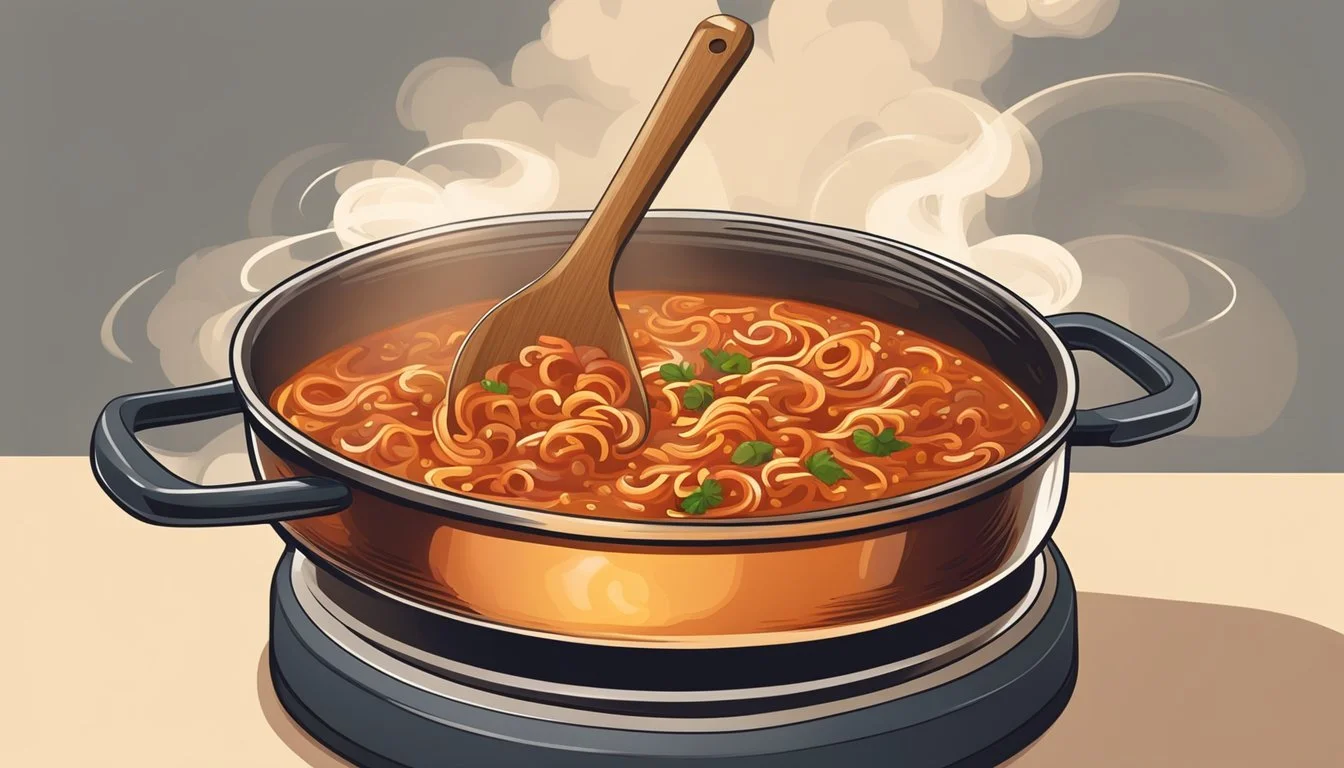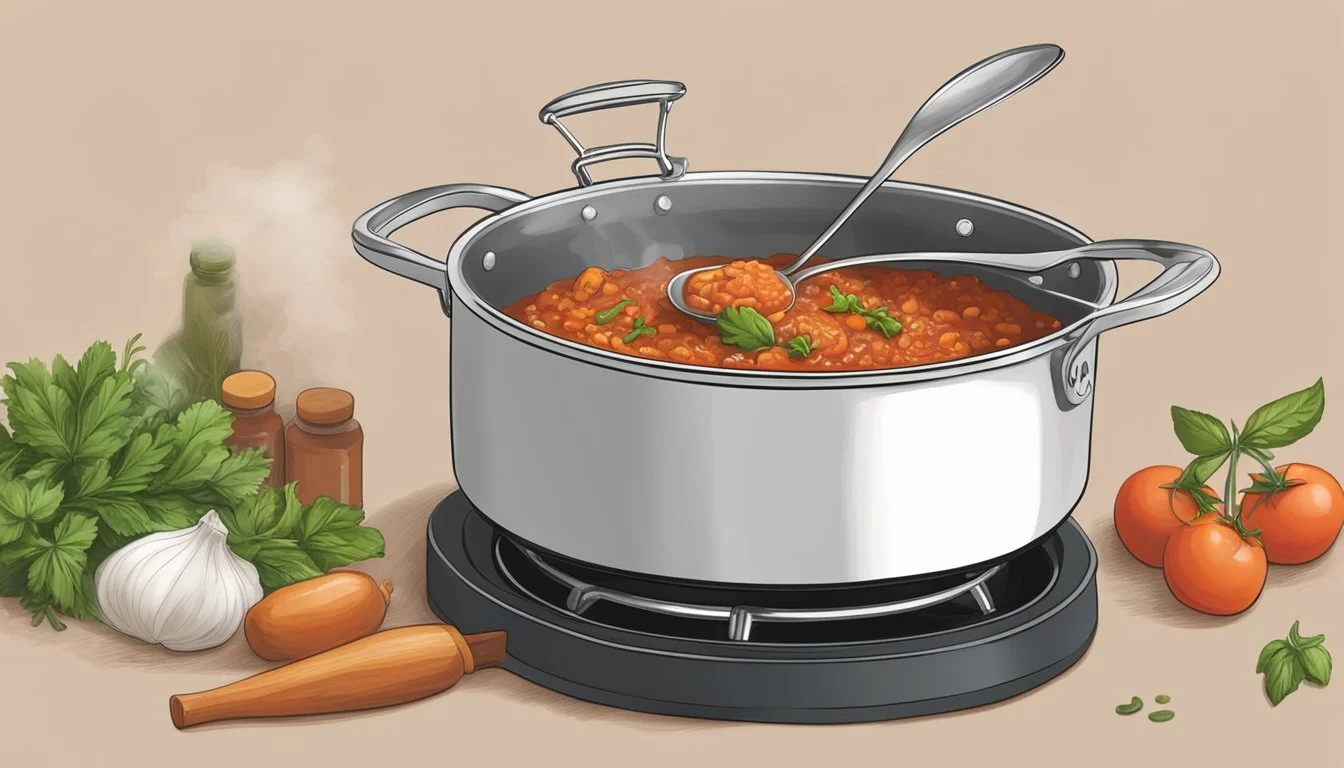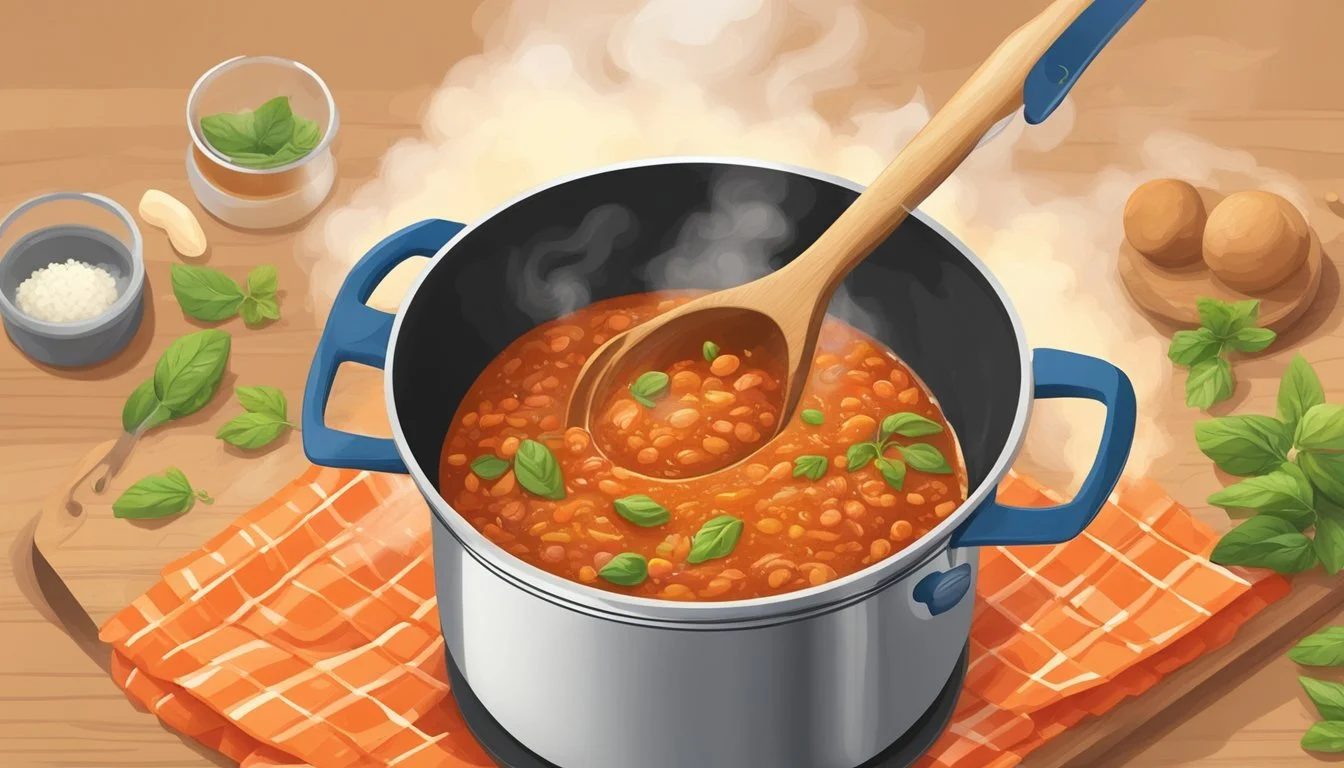How to Reheat Bolognese Sauce
Best Methods Explained
Reheating bolognese sauce can be a challenge for many home cooks, especially when aiming to retain the rich flavor and hearty texture that makes this classic Italian dish so beloved. The key to successful reheating lies in gentle, consistent heat and the occasional addition of liquid to maintain the sauce's consistency. Whether you are dealing with leftovers from a big family dinner or preparing a quick weeknight meal, knowing the right methods will ensure your bolognese remains just as delightful as when it was freshly made.
For those reheating spaghetti bolognese, consider separating the pasta from the sauce before starting. Heat the sauce over low to medium heat, stirring periodically to prevent scorching. If the sauce becomes too thick, a splash of broth or water can restore its smooth texture without compromising flavor. Meanwhile, reheating the pasta quickly in boiling water can rejuvenate its tenderness.
Using the oven is another excellent option, especially for larger portions or when you want to preserve the sauce's depth of flavor. Simply spread the bolognese in an oven-safe dish, cover it with foil, and bake at a moderate temperature, ensuring the flavors meld beautifully. This method provides a hands-off approach that results in a mouthwatering, perfectly reheated dish ready for serving.
Understanding Bolognese Sauce
Bolognese sauce is a classic Italian dish known for its rich, hearty flavors. Primarily a meat sauce, it often includes ground beef, pork, or veal.
Ingredients commonly found in Bolognese sauce are:
Tomatoes: Fresh or canned, they form the sauce's base.
Onions and Garlic: Essential for depth of flavor.
Carrots: Add slight sweetness.
Wine: Red or white, enhances the overall taste.
Beef stock: Increases the sauce's richness.
This sauce is traditionally cooked slowly over low heat. The lengthy simmering process allows the ingredients to meld together, creating a thick, flavorful sauce.
Many recipes also include milk or cream, making the sauce smoother and tenderizing the meat.
Typically served with pasta, Bolognese pairs well with tagliatelle or other broad noodles, which hold the thick sauce well.
This versatile sauce can also be used in lasagna, adding another layer of flavor to this beloved dish.
Understanding these components and cooking techniques helps in achieving the authentic taste of Bolognese sauce.
Proper Storage Practices
For maintaining the quality and safety of your Bolognese sauce, it's crucial to follow correct storage techniques. Temperature control is essential to prevent bacterial growth and spoilage.
Refrigeration Guidelines
When storing Bolognese sauce in the refrigerator, use an airtight container to keep out air and contaminants. Transfer the sauce to the container while it is still warm, but not steaming, to prevent condensation. Ensure the refrigerator is set to 40°F (4°C) or below.
Label the container with the date to monitor freshness. Consume the refrigerated Bolognese sauce within 3 to 4 days. Frequent opening and closing of the refrigerator can cause temperature fluctuations that might lead to spoilage.
How to Freeze Bolognese Sauce
Freezing Bolognese sauce extends its shelf life significantly. First, allow the sauce to cool to room temperature before transferring it into a freezer-safe, airtight container or resealable freezer bags. Remove as much air as possible from the bags to prevent freezer burn.
Label the containers with the date to track their storage time. Freeze the Bolognese sauce at 0°F (-18°C) or below. The sauce can be kept frozen for up to three months without significant loss of flavor or texture.
Thawing Frozen Sauce
To thaw frozen Bolognese sauce, transfer it from the freezer to the refrigerator about 24 hours before you plan to use it. This slow thawing process helps maintain the sauce’s texture and flavor.
For quicker thawing, you can place the sealed container or bag in a bowl of cold water, changing the water every 30 minutes. Avoid thawing at room temperature to prevent bacterial growth. Once thawed, reheat the sauce to at least 165°F (74°C) before consuming to ensure it is safe to eat.
Preparing for Reheating
Reheating bolognese sauce successfully requires specific steps to ensure the sauce retains its flavor and consistency. This involves careful attention to moisture levels and separating the sauce from any pasta.
Adding Moisture Back to Sauce
Moisture is crucial when reheating bolognese sauce to prevent it from drying out. Pasta water or a small amount of broth can be added to the sauce to help restore its consistency. Olive oil is another option that can enhance moisture and flavor.
Covering the sauce with a damp paper towel or a lid while reheating in the microwave helps retain steam. Stir periodically to ensure even heating.
For stovetop reheating, use medium-low heat and stir frequently. Adding a splash of liquid at this stage can prevent the sauce from becoming too thick.
Separating Sauce and Pasta
When dealing with leftover spaghetti bolognese, it is beneficial to separate the sauce from the pasta before reheating. This ensures each component is heated properly.
Reheat the sauce first, either in a microwave-safe container or on the stovetop. Boiled pasta water can help refresh the pasta, giving it a just-cooked texture.
Heat the pasta by immersing it briefly in boiling water, then combining it with the reheated sauce for even distribution of heat and flavor. This method prevents the pasta from becoming mushy and ensures that both elements are perfectly warmed.
Reheating on the Stovetop
Reheating bolognese sauce on the stovetop is one of the best methods to maintain its rich flavors and ensure even heating.
Step-by-Step Guide to Reheating Spaghetti Bolognese on the Stove:
Preparation: Place the desired portion of refrigerated bolognese sauce in a pot or pan.
Initial Heating: Set the stovetop to low heat. This prevents scorching or drying out the sauce.
Stirring: Stir occasionally to distribute heat evenly and protect the texture.
Adjusting Consistency: If the sauce seems dry, add a splash of water, broth, or wine to revive lost moisture.
Simmering: Once the sauce starts to bubble, reduce to a simmer. Continue stirring occasionally.
Heating time can vary, but typically, 10-15 minutes ensures the sauce is thoroughly hot. Using low heat helps retain the flavors and prevents the sauce from burning.
Tips for Best Results:
Even Heating: Use low, consistent heat and stir regularly.
Reviving the Sauce: Adding liquid can help maintain moisture.
Pasta: If reheating spaghetti bolognese, the pasta can be tossed directly into the pan with the sauce.
The stovetop method ensures a rich, flavorful result, making it an ideal choice for reheating bolognese sauce.
Using the Oven to Reheat
Reheating bolognese sauce in the oven ensures the dish is warm throughout and retains its robust flavors. The key steps involve choosing the right oven-safe dish and appropriately layering the sauce for optimal moisture and taste.
Oven-Safe Dish Selection
It's essential to select an oven-safe dish for reheating bolognese sauce. Materials such as ceramic, glass, or oven-safe metal are suitable. Avoid plastic containers even if marked as microwave-safe.
An oven-safe dish should be deep enough to prevent spillage. Additionally, check that the dish has a lid or prepare aluminum foil to cover. Covering the dish keeps moisture in, preventing the sauce from drying out.
Layering for Flavor Preservation
Spread the leftover bolognese sauce evenly in the chosen oven-safe dish. Ensure the sauce is not too thick to promote even heating. Drizzle a small amount of water or beef stock on the top layer; this helps in retaining moisture.
Cover the dish with aluminum foil or a tight-fitting lid. Place it in a preheated oven at 325°F (160°C). Heat for approximately 20-30 minutes, stirring halfway through.
Always check the sauce's temperature before serving to ensure it’s heated through. This method preserves the rich flavors and textures of the original dish.
Microwave Reheating Method
For quick and efficient reheating of bolognese sauce, the microwave method is a practical choice. This approach ensures an even distribution of heat, maintaining the sauce's flavor and texture.
Arranging Sauce for Microwave Heating
First, transfer the desired amount of bolognese sauce into a microwave-safe bowl. It's important to choose a container that allows space for the sauce to bubble without overflowing. Cover the bowl with either a microwave-safe lid or a damp paper towel. This step helps retain moisture while allowing steam to escape and prevents the sauce from drying out.
Ensure the sauce is spread out evenly inside the container for consistent heating. If the sauce has thickened, consider adding a splash of water, stock, or milk to reach the preferred consistency. Stir well to combine, which helps prevent any cold spots during heating.
Microwave Timing and Power Levels
Set the microwave to medium power (about 50% power level). This helps in heating the sauce evenly without breaking down the flavors. Heat the sauce in short intervals of 30 seconds. After each interval, stir the sauce to ensure uniform heating and avoid hot spots.
Continue this process until the sauce is thoroughly heated. Typically, it will take about 2-4 minutes, depending on the quantity. If the sauce bubbles excessively or starts to dry out, adjust the power level or add a bit more liquid to maintain the desired consistency. Once heated, let the sauce rest for a minute before serving.
Final Touches After Reheating
After reheating bolognese sauce, the final touches can elevate your dish to another level. Focus on restoring texture and enhancing flavor with fresh ingredients.
Restoring the Texture
To achieve the right consistency, assess the moisture level once reheated. If the sauce looks too thick, add a small amount of water, broth, or tomato sauce. Stir gently and allow it to integrate fully.
If the sauce is too watery, allow it to simmer a bit longer to evaporate excess liquid. A dash of olive oil can also add smoothness. Stirring in a tablespoon of cream or milk can create a richer texture.
For reheated pasta, ensure it isn’t clumpy by tossing it with a little olive oil. This prevents it from sticking together and restores a fresh-cooked feel.
Adding Fresh Ingredients
Enhance your reheated bolognese with fresh herbs. Adding fresh basil or parsley can brighten the flavors. Chop these herbs finely and sprinkle them over the dish before serving.
Grate fresh parmesan cheese over the top for an extra layer of flavor. If parmesan isn’t available, any hard grated cheese can work as a substitute.
Season the sauce to taste with salt and pepper. This can help balance flavors that may have dulled during storage. Consider adding a touch of chili flakes if you like a bit of heat.
Remember to serve immediately after adding these fresh ingredients for the best flavor experience. The fresh herbs and cheese, combined with properly reheated and textured sauce, will make your dish stand out.
Serving Suggestions
For a classic presentation, serve spaghetti bolognese with freshly grated Parmesan cheese and a sprinkle of chopped fresh parsley or basil.
Pair the rich bolognese sauce with fettuccine or tagliatelle for a more traditional Italian experience. These types of pasta hold the sauce well due to their broader shape.
Ensure that pasta is cooked al dente. This slightly firm texture provides a pleasant contrast to the hearty sauce.
A side dish consisting of a crisp green salad with a simple vinaigrette dressing adds a refreshing element to the meal.
For an extra touch, consider offering garlic bread or a crusty baguette on the side. It’s perfect for mopping up any leftover sauce.
Alternatively, serve the bolognese sauce over zucchini noodles or other vegetable-based noodles for a lighter, low-carb option.
Wine pairings enhance the flavors of the dish. A robust red wine, such as a Chianti or Sangiovese, complements the rich meat sauce beautifully.
These small adjustments and thoughtful pairings can turn a simple reheated spaghetti bolognese into a delightful dining experience.






